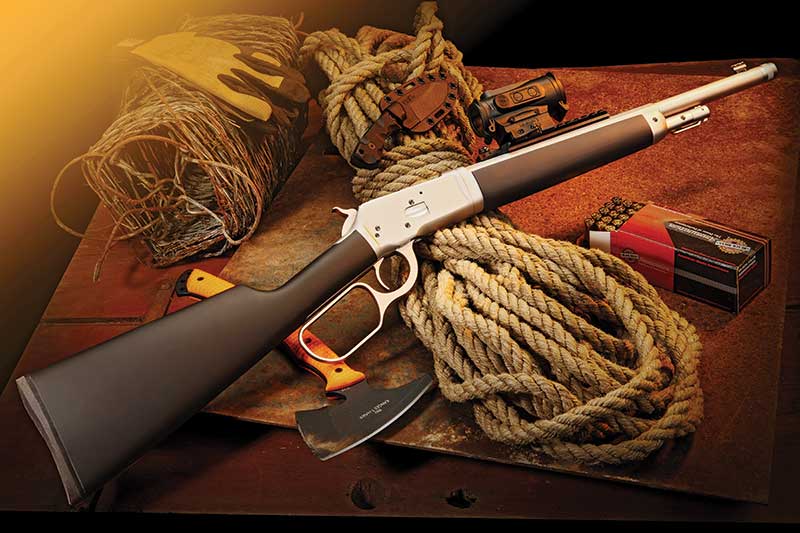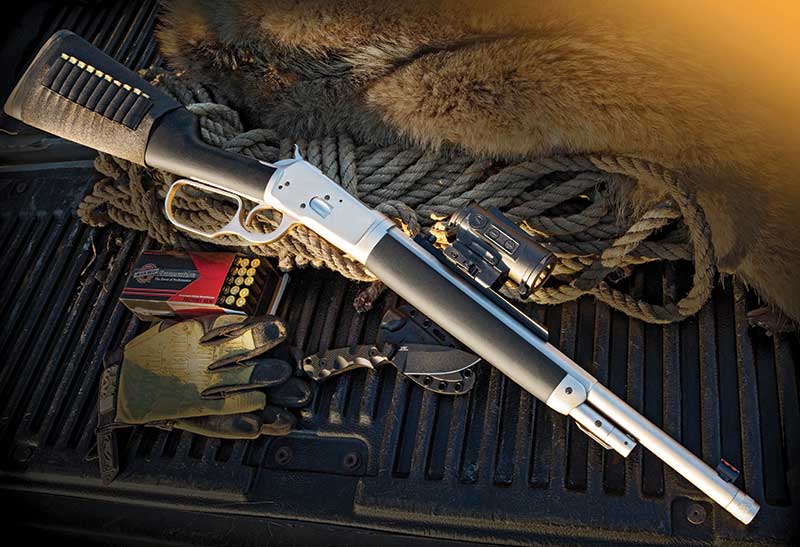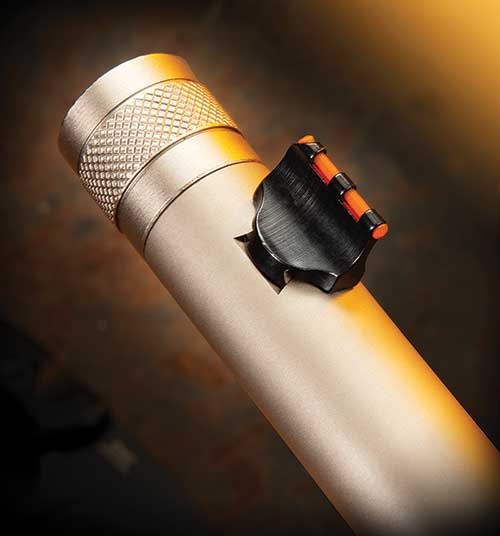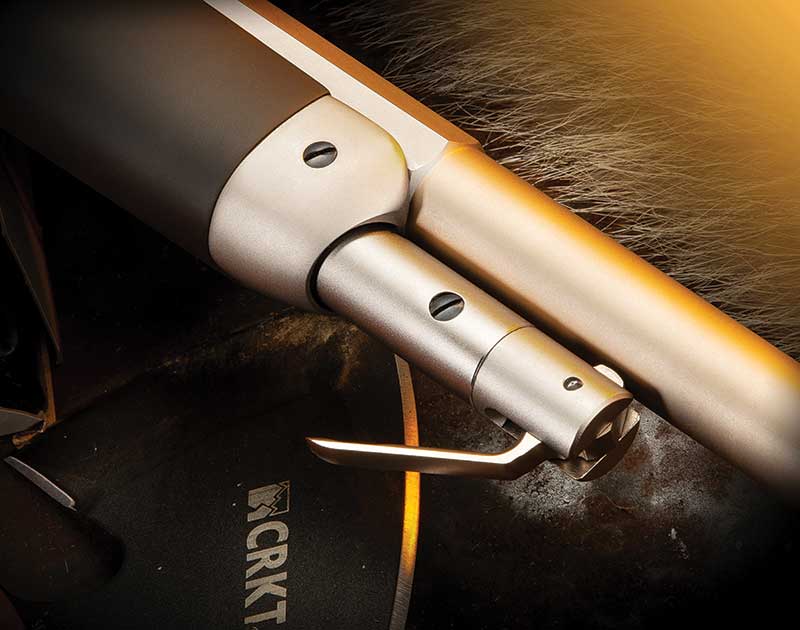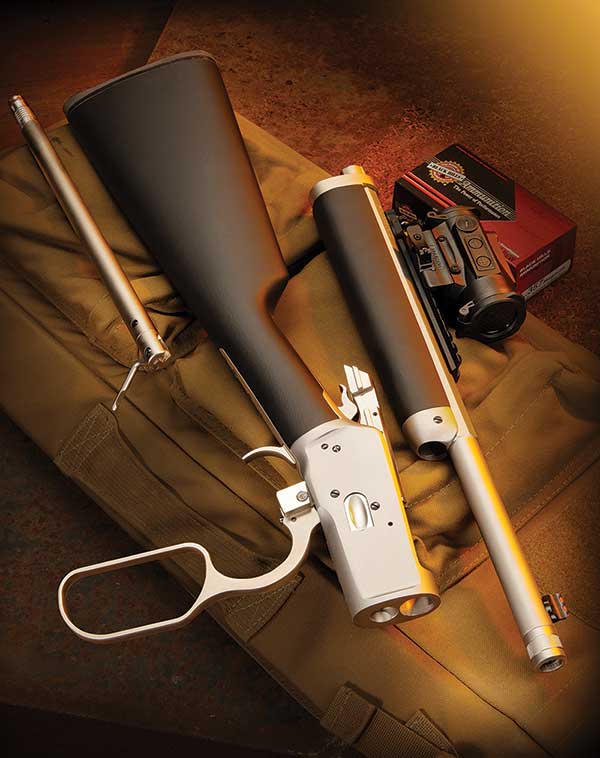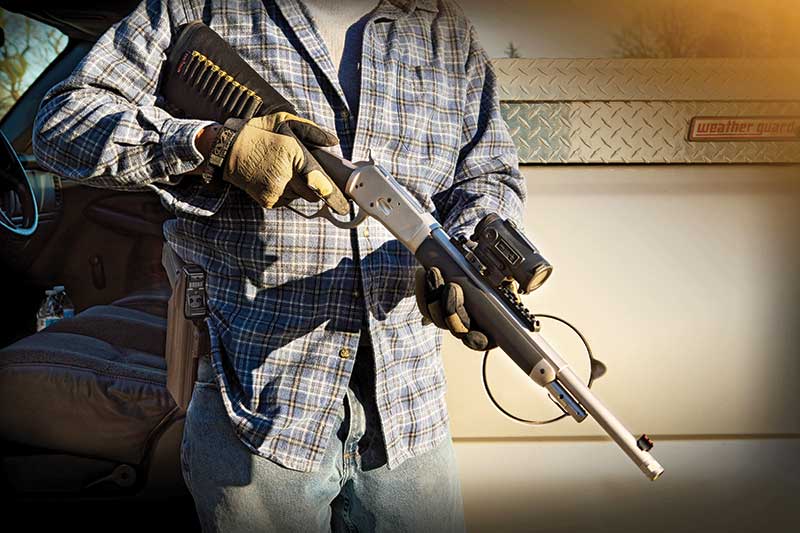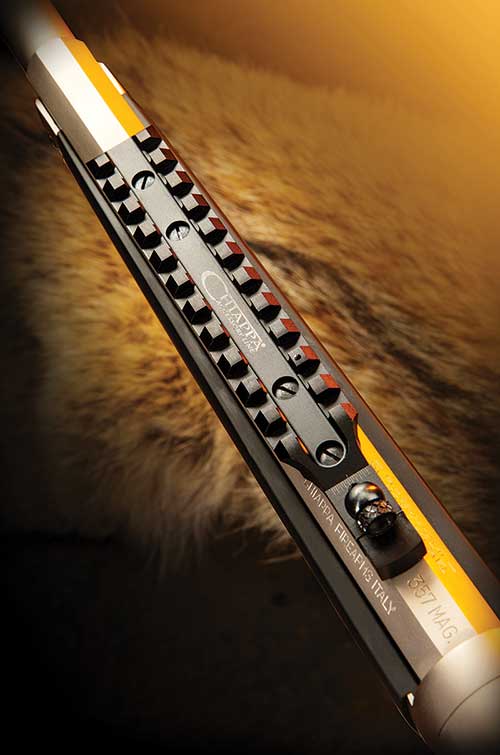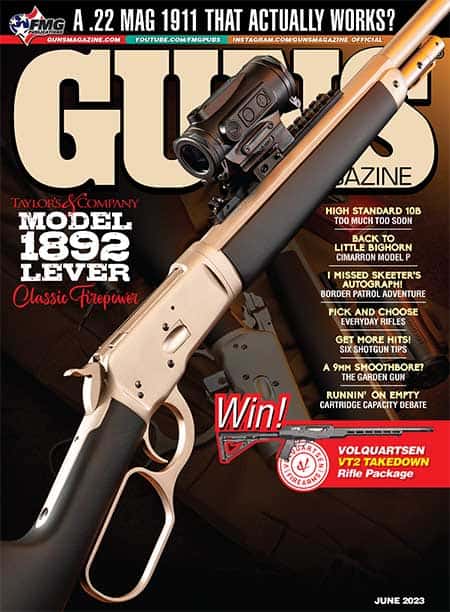Taylor's & Company 1892 Alaskan Takedown
Compact Defensive Fire Power!
Quick, what 130-year-old product do you still use in its original form? A car? Nope. Airplane? Nope. Train? Nope. Radio, TV set, computer, socket set, camera … nope all around.
But what about a Model 1892 lever-action, thank-you-very-much? His Eminence John Browning designed many guns that still are essentially the same as they were when he created them in 1885, 1886, 1892, 1894 and 1911, to name just a handful. If those numbers sound familiar it’s because they are still in production by one company or another and all are essentially made in exactly the same form Browning brought to life originally. Amazing? You bet.
Words like “genius” roll off the tongue easily when talking about Browning and for too many reasons to begin to list. Even iconic products like the Model T and Model A Ford, P-51 Mustang, Missouri-class battleships and huge living room radios from the 1930s came and went.
But not so the designs of this most remarkable fellow. The reasons are clear — they worked back then and continue to perform yeoman duty today with essentially no fundamental changes.
Bringing us neatly to the Tayor’s & Company 1892 Alaskan Takedown .357 Magnum in this delightful hard chrome finish. Both the .357 caliber and the hard chrome would have likely pleased Browning, who was always looking for a high level of functionality and performance. And indeed, that’s exactly what you have in this handy, thoughtful and effective rifle.
Very Convincing
Made by Chiappa in Italy expressly for Taylor’s, this classically styled 1892 is more than a copy, it’s a significant rifle in its own right. Build quality is top-flight and is reflected in the $1,748 price point. Rest assured, this is a life-time investment, one handily making the “Cry once and get it over with, then enjoy it forever” list. The rifle shows the sort of hand-fitting and attention to detail all-too-lacking in today’s world. If you yearn for pride of ownership these days — you’ve found an answer to your quest.
If you’re familiar with the 1892 family, you’ll be right at home with the Alaskan. But be prepared to smile when you realize it mirrors the original take-down model and even uses the same mechanical wizardry to accomplish the deed. Work the lever to clear it and the smile remains, trust me. This rifle is smooth to run, handy to hold at only 5.9 lbs., compact even when assembled with the 16″ half-octagon barrel and convincing when relied upon to do the work it’s intended to perform. It’s also available in a 20″ full octagonal barrel, adding some muzzle heft if you like that sort of thing.
Self-defense at home? Check. Taking a deer for the freezer? Check again. Easily stowed in a truck or plane? Yup. Stuffed into a backpack “just in case”? Done. Get the drift here? Handguns are handy — but rifles are sure.
Some Facts
Winchester’s then-president Thomas Bennet asked John Browning for a smaller version of the 1886 in .45-70 and teased Browning with a $15,000 payment if he could deliver it within two months. He forgot who he was dealing with. Browning delivered the 1892 design in 30 days — and Bennet paid him $20,000. This is about $700,000 in today’s money, give or take. Production began almost immediately and continued until 1941, with about one million 1892s produced. It seems Browning nailed it.
Yet, after languishing for a while, other companies began production of the design and it continues today. The Chiappa model is a mirror image of the original, other than the finishes, sights and a slightly opened lever. Hand today’s rifle to a cowpoke in 1890 and he’d know just what to do with it. You can’t say that about a cell phone or a video game.
Our model has black hardwood stocks (walnut) with a soft-touch rubber over-molding and soft butt pad. Available in hard chrome or a black finish, it has a Skinner rear aperture and a fiber-optic front. The 16″ half-octagonal barrel is handily threaded 5/8×24 and comes with a nice thread protector installed. The D-shaped lever isn’t “too” open so your hand doesn’t flop around in it like a big loop. The supplied sight rail accepts Weaver #61 bases and you can see the irons with just the rail installed. If you break your optic, you can just pop it off and still be good to go.
The trigger is a nice feeling 4.5 lbs., the rifle is about 35″ overall and when taken down, would store neatly in a soft case. The receiver end is about 19″ long while the barrel section is about 16″. It’s slightly muzzle-heavy due to the half-octagon barrel but I found it to be a very good feeling. My rifle has a 7+1 capacity but someone also said they got eight into their magazine so I’m not sure what’s correct. I did note Italy mandates a 5-round capacity so I’m not sure if guns shipped to the states still have the limiter in the magazine. This would be easy to check. Mine obviously doesn’t have it installed.
Take-Down
Breaking things in two is very simple. First unload and clear the chamber since you’ll be putting your hand in front of the muzzle. You use the lever at the muzzle end of the magazine tube to unscrew the tube from the receiver. Open the lever, then grasp the barrel assembly and give it a quarter turn to the left. The threads are interrupted and the two halves should part company. I found it gets easier to do after you go through the motions a dozen times or so settling the parts in.
Reassembly is the reverse. Note the magazine tube can come out so be careful with it while the gun is split in two.
The rifle doesn’t have a dedicated safety like a cross-button, just the half-cock of the hammer. Frankly, I carry my lever guns with the chamber empty and simply lever a cartridge into the chamber when it’s time to shoot. If you were in a hunting blind, I suppose you could keep a round chambered and the hammer on half-cock — but why take any risks?
Uses
I have a similar rifle as the Taylor’s but from Skinner Sights, called “The Bush Pilot” in .44 Magnum. I believe it’s also by Chiappa and I’ve shot it extensively having spent many hours bouncing around my place here in my tractor or the E-Z-Go. The tidy dimensions make it awfully handy and either the .357 or the .44 Magnum version of the Taylor’s would duplicate it, I’m sure. If you’ve never carried one, the feel of a Model 1892 is simply marvelous when grasped around the receiver to tote. It’s difficult not to think about being alone on the prairie with the sound of hoof beats approaching as you raise your rifle.
Shooting
The photo rifle was supplied with a red dot sight but my rifle only had the irons. This is fine though because it’s how I’d carry a gun like this. I shot a few groups at 50 yards and found the .357 Magnum to be easy to handle in the rifle. I’ve found the .44 Magnum tends to thump a surprising amount so this was a nice change. I ran some .38 Special loads through it also and found they fed just fine. Often .38s will toss one out of the top since they are shorter, but the Alaskan handled them nicely.
Some sample velocities were 1,112 fps for a Black Hills 125-grain JHP .38 Special load (919 fps from a 4″ revolver I had handy); 1,723 fps for a Hornady 125 Critical defense .357 (1,354 from the revolver); 1,518 for an interesting Federal 180-grain Castcore FP .357 lead load (1,114 out of the revolver) and a very fun 810 fps from a Black Hills .38 Special wadcutter (683 fps from the revolver). I shot other .357 loads too and the rifle managed things just fine, with groups hovering in that 1.5″ to 1.75″ range usually with velocities 200 to 300 fps faster in the rifle than in the revolver with most .357 loads. With a bullet constructed for higher velocities (like a Barnes or hard cast), this is an effective deer or pig rifle.
Great accuracy came from most loads, with the Black Hills 125-grain JHP .38 Special with a 1.35″ 50-yard group among the best. It also liked the BH 148 wadcutter and it was easy and great fun to shoot them into consistent 1.5″, also at 50. What a great rabbit load it would be, or used to teach new shooters about lever guns. I also found I could wang my 80-yard torso gong in the center chest easily off-hand with any load, and the heavy 180 Federal load really thumped it.
In typical lever action fashion, I did find the loading gate to be a bit nippy and had I kept this rifle, I’d likely have stoned a couple of sharp edges down. But, you can avoid issues by pushing in a round but leaving it sticking out a bit, then pushing it into the magazine tube with the next round — repeat as needed. I use my little finger to push the final one in.
My Conclusion?
As a personal defense rifle for home or travel, defense against critters, hunting, cowboy-action shooting, plinking and fun — or just to have and appreciate — the Taylor’s & Company 1892 Alaskan offers tradition and history along with a hefty dose of practical ability. One good thing about this sort of rifle is they’re almost invisible to authorities. If you have it in your truck, it’s “… just my old cowboy rifle” to most LE eyes — not some nasty, scary tactical blaster.
But the Alaskan Takedown would still hold its own, if needed. Trust me on that.
